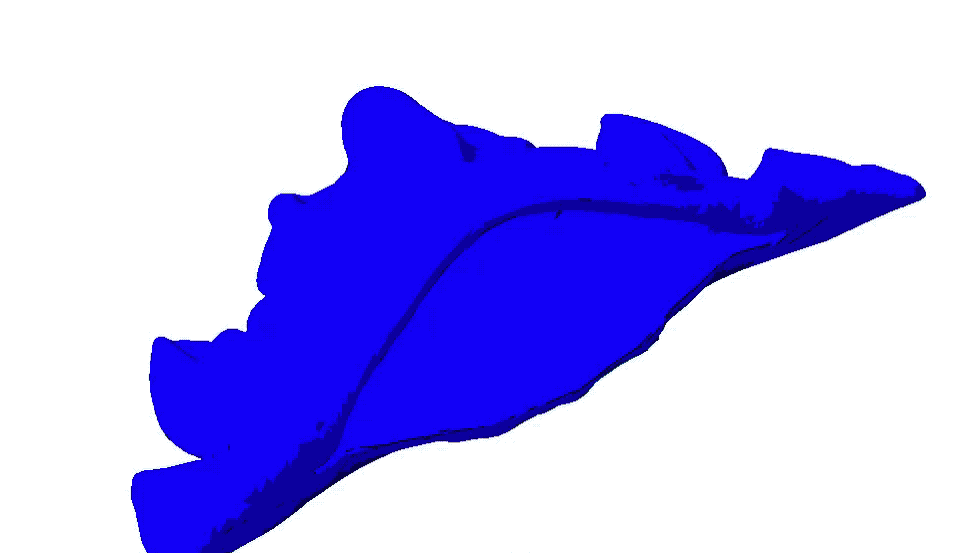Jun 12 2019
The mantis shrimp is considered as one of the crankiest creatures in oceans. Even when it is attacked by its own species, it will not get injured.
 Researchers have shown that compared to other mantis shrimp species, the shield-like tail segment (telson) of the “smasher” species offers the best protection for the animal’s body. (Purdue University video/Pablo Zavattieri)
Researchers have shown that compared to other mantis shrimp species, the shield-like tail segment (telson) of the “smasher” species offers the best protection for the animal’s body. (Purdue University video/Pablo Zavattieri)
The strategy of this creature can help in solving a major manufacturing issue—producing lighter materials that are capable of absorbing plenty of energy from a piercing impact within a restricted amount of space.
Think prized cargo. What if a material is available that can possibly prevent car ceilings from falling on passengers at the time of an accident, or prevent delicate objects from breaking when delivered over extended distances?
The secret of the mantis shrimp lies in its tail appendage, known as a telson. Now, engineers have come to know what actually enables the telson to absorb the blows of its aggressive self, with the aim of using these lessons on protective gear.
The work, reported in the journal Advanced Functional Materials, was carried out by a research team that included Pablo Zavattieri’s laboratory at Purdue University and David Kisailus’ laboratory at the University of California, Riverside.
It is possible to shape a telson either as a burrowing shovel for “spearer” species that also kill prey, or as a territorial shield for “smasher” species. The team discovered how the telson of the smasher is better at guarding the mantis shrimp when compared to that of the spearer species.
The researchers’ findings demonstrate that the telson of the smasher has curved ridges known as carinae on the exterior part and a helicoidal structure molded like a spiral staircase on the interior part. Tests were subsequently performed on the 3D-printed replicas of the telson and also on the mantis shrimp itself by UC Riverside. They revealed that the carinae stiffen the shield of a smasher and also allow this species to flex inward.
Along with the helicoidal structure, which inhibits cracks from increasing upon impact, the shield is able to absorb a lot of energy during a strike without breaking apart.
Researchers at Purdue University used computational models to verify the role of carinae, replicating the attacks of a single mantis shrimp against the telson of another. The team also “invented” species that had traits between the spearer and smasher to assess which type of telson provided the most optimized protection to the animal.
We started with the telson of the spearer and gradually added features that start looking like the smasher. The smasher shield is clearly more ideal for preventing impact from reaching the rest of the body, which makes sense because the mantis has organs all the way to its tail.
Pablo Zavattieri, Professor, Civil Engineering, Purdue University
The same helicoidal structure was observed in the dactyl club appendage of the smasher mantis by Zavattieri and Kisailus, a professor of chemical and environmental engineering and the Winston Chung Endowed Chair of Energy Innovation at UC Riverside. However, this structure hits a telson with the speed of a .22 caliber bullet.
We realized that if these organisms were striking each other with such incredible forces, the telson must be architected in such a way to act like the perfect shield. Not only did the telson of the smasher contain the helicoid microstructure, but there were significantly more energy-absorbing helicoidal layers in the smashing type than the spearing type.
David Kisailus, Professor, Department of Chemical and Environmental Engineering, University of California, Riverside
Zavattieri’s team has already started to incorporate the crack propagation mechanisms of the mantis’ exoskeletons inside 3D-printed cement paste, a major ingredient of the mortar and concrete used for constructing numerous elements of infrastructure. His laboratory is also planning to try out beneficial structures from the arthropod.
However, more clues are still there that need to be uncovered about all that helicoidal structures and carinae have to offer, stated the team, and also how to develop them into novel materials.
The dactyl club is bulky, while the telson is very lightweight. How do we make protective layers, thin films and coatings for example, that are both stronger and lighter?
Pablo Zavattieri, Professor, Civil Engineering, Purdue University
The Air Force Office of Scientific Research funded the study.
Telson: The Mantis Shrimp's Protective Tail
The mantis shrimp can fight itself without getting injured. Researchers are mimicking the tail segment structures that make this possible. (Video credit: University of California, Berkeley/Roy Caldwell)